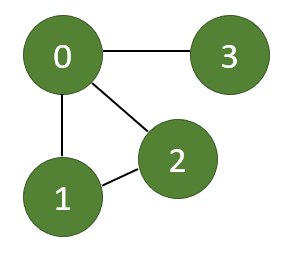Palindromic Subsequence: Definition and Applications
- Harini Mallawaarachchi
- Apr 15, 2023
- 2 min read
A palindromic subsequence is a sequence of characters that reads the same backward as forward. Palindromic subsequences are a fascinating concept with many applications, from language processing to genetics. In this article, we will discuss palindromic subsequences, how to find them, and their applications in Python.
Finding Palindromic Subsequences in Python
The following Python code snippet demonstrates how to find all palindromic subsequences in a given string:
def find_palindromic_subsequences(s):
palindromes = set()
n = len(s)
for i in range(n):
for j in range(i, n):
if s[i:j + 1] == s[i:j + 1][::-1]:#
palindromes.add(s[i:j + 1])
return palindromes
print(find_palindromic_subsequences("ssadass"))
# {'ada', 'd', 'sadas', 'a', 'ss', 'ssadass', 's'}
Here's how it works:
Initialize an empty set `palindromes` to store the palindromic subsequences that are found.
Determine the length of the input string `s` and store it in the variable `n`.
Loop through every possible pair of indices `i` and `j` such that `i` is less than or equal to `j` and `j` is less than `n`.
Check if the substring of `s` from index `i` to index `j` (inclusive) is a palindrome. This is done by comparing the substring to its reverse, which is obtained using the `[::-1]` slicing syntax.
If the substring is a palindrome, add it to the set of palindromic subsequences.
After all possible palindromic subsequences have been found, return the set of palindromes.
For example, if we call `find_palindromic_subsequences` with the input string "ssadass", it will return the set `{'ada', 'd', 'sadas', 'a', 'ss', 'ssadass', 's'}`. These are all of the palindromic subsequences of "ssadass", including single characters, substrings, and the entire string itself.
Applications of Palindromic Subsequences
Palindromic subsequences have many applications in computer science and beyond. Here are a few examples:
Genetics: In genetics, DNA is composed of four nucleotides (A, C, G, T). Palindromic subsequences in DNA can be indicative of specific genetic properties, such as the presence of restriction sites for enzymes used in DNA sequencing.
Language processing: Palindromic words and phrases are used for artistic effect in literature and poetry. Palindromic subsequences can also be used to identify patterns in language, such as repeated sounds or syllables.
Computer algorithms: Palindromic subsequences are a common problem in computer algorithms, as they require efficient algorithms to find and analyze them. Palindromic subsequences can be used in data compression, error correction, and other applications.
Conclusion
Palindromic subsequences are an important concept in computer science, genetics, and language processing. By finding palindromic subsequences in a given string, we can gain insights into the structure and properties of the string. Python provides a simple and efficient way to find palindromic subsequences using nested loops and slicing.



Comments